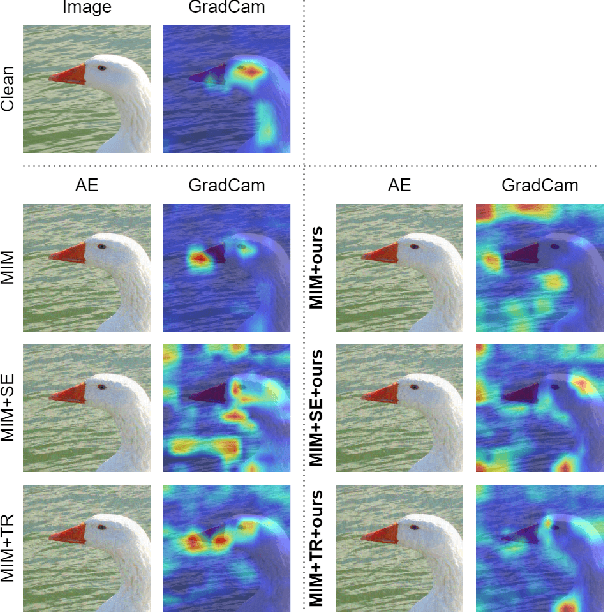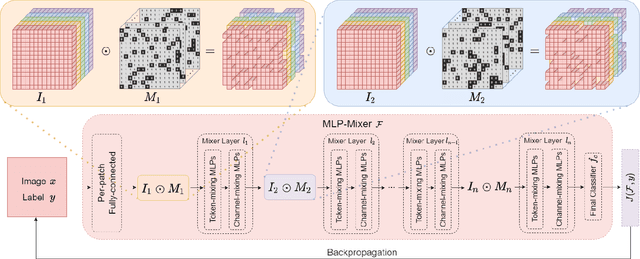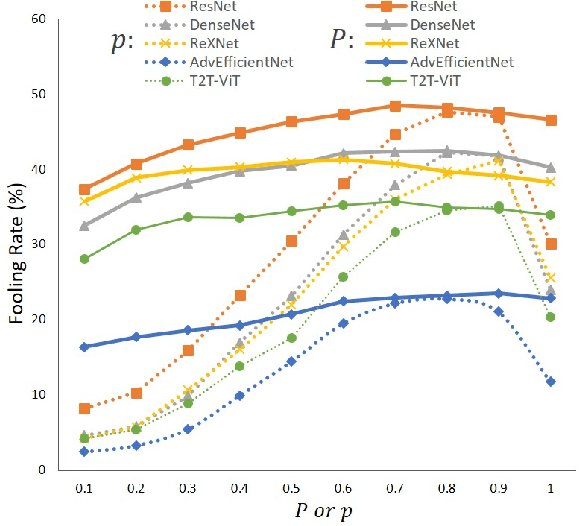Yuhang Zhao
Guangdong Laboratory of Artificial Intelligence and Digital Economy
FlowDet: Overcoming Perspective and Scale Challenges in Real-Time End-to-End Traffic Detection
Aug 27, 2025Abstract:End-to-end object detectors offer a promising NMS-free paradigm for real-time applications, yet their high computational cost remains a significant barrier, particularly for complex scenarios like intersection traffic monitoring. To address this challenge, we propose FlowDet, a high-speed detector featuring a decoupled encoder optimization strategy applied to the DETR architecture. Specifically, FlowDet employs a novel Geometric Deformable Unit (GDU) for traffic-aware geometric modeling and a Scale-Aware Attention (SAA) module to maintain high representational power across extreme scale variations. To rigorously evaluate the model's performance in environments with severe occlusion and high object density, we collected the Intersection-Flow-5k dataset, a new challenging scene for this task. Evaluated on Intersection-Flow-5k, FlowDet establishes a new state-of-the-art. Compared to the strong RT-DETR baseline, it improves AP(test) by 1.5% and AP50(test) by 1.6%, while simultaneously reducing GFLOPs by 63.2% and increasing inference speed by 16.2%. Our work demonstrates a new path towards building highly efficient and accurate detectors for demanding, real-world perception systems. The Intersection-Flow-5k dataset is available at https://github.com/AstronZh/Intersection-Flow-5K.
ReEx-SQL: Reasoning with Execution-Aware Reinforcement Learning for Text-to-SQL
May 19, 2025Abstract:In Text-to-SQL, execution feedback is essential for guiding large language models (LLMs) to reason accurately and generate reliable SQL queries. However, existing methods treat execution feedback solely as a post-hoc signal for correction or selection, failing to integrate it into the generation process. This limitation hinders their ability to address reasoning errors as they occur, ultimately reducing query accuracy and robustness. To address this issue, we propose ReEx-SQL (Reasoning with Execution-Aware Reinforcement Learning), a framework for Text-to-SQL that enables models to interact with the database during decoding and dynamically adjust their reasoning based on execution feedback. ReEx-SQL introduces an execution-aware reasoning paradigm that interleaves intermediate SQL execution into reasoning paths, facilitating context-sensitive revisions. It achieves this through structured prompts with markup tags and a stepwise rollout strategy that integrates execution feedback into each stage of generation. To supervise policy learning, we develop a composite reward function that includes an exploration reward, explicitly encouraging effective database interaction. Additionally, ReEx-SQL adopts a tree-based decoding strategy to support exploratory reasoning, enabling dynamic expansion of alternative reasoning paths. Notably, ReEx-SQL achieves 88.8% on Spider and 64.9% on BIRD at the 7B scale, surpassing the standard reasoning baseline by 2.7% and 2.6%, respectively. It also shows robustness, achieving 85.2% on Spider-Realistic with leading performance. In addition, its tree-structured decoding improves efficiency and performance over linear decoding, reducing inference time by 51.9% on the BIRD development set.
"This really lets us see the entire world:" Designing a conversational telepresence robot for homebound older adults
May 23, 2024



Abstract:In this paper, we explore the design and use of conversational telepresence robots to help homebound older adults interact with the external world. An initial needfinding study (N=8) using video vignettes revealed older adults' experiential needs for robot-mediated remote experiences such as exploration, reminiscence and social participation. We then designed a prototype system to support these goals and conducted a technology probe study (N=11) to garner a deeper understanding of user preferences for remote experiences. The study revealed user interactive patterns in each desired experience, highlighting the need of robot guidance, social engagements with the robot and the remote bystanders. Our work identifies a novel design space where conversational telepresence robots can be used to foster meaningful interactions in the remote physical environment. We offer design insights into the robot's proactive role in providing guidance and using dialogue to create personalized, contextualized and meaningful experiences.
Springboard, Roadblock or "Crutch"?: How Transgender Users Leverage Voice Changers for Gender Presentation in Social Virtual Reality
Feb 13, 2024



Abstract:Social virtual reality (VR) serves as a vital platform for transgender individuals to explore their identities through avatars and foster personal connections within online communities. However, it presents a challenge: the disconnect between avatar embodiment and voice representation, often leading to misgendering and harassment. Prior research acknowledges this issue but overlooks the potential solution of voice changers. We interviewed 13 transgender and gender-nonconforming users of social VR platforms, focusing on their experiences with and without voice changers. We found that using a voice changer not only reduces voice-related harassment, but also allows them to experience gender euphoria through both hearing their modified voice and the reactions of others to their modified voice, motivating them to pursue voice training and medication to achieve desired voices. Furthermore, we identified the technical barriers to current voice changer technology and potential improvements to alleviate the problems that transgender and gender-nonconforming users face.
Structure design and coordinated motion analysis of bionic crocodile robot
Nov 03, 2023



Abstract:Crocodiles, known as one of the oldest and most resilient species on Earth, have demonstrated remarkable locomotor abilities both on land and in water, evolving over millennia to adapt to diverse environments. In this paper, we draw inspiration from crocodiles and introduce a highly biomimetic crocodile robot equipped with multiple degrees of freedom and articulated trunk joints. This design is based on a comprehensive analysis of the structural and motion characteristics observed in real crocodiles. The bionic crocodile robot has the problem of limb-torso incoordination during movement, in order to solve this problem, we apply the D-H method for both forward and inverse kinematics analysis of the robot's legs and spine. Through a series of simulation experiments, we investigate the robot's stability of motion, fault tolerance, and adaptability to the environment in two motor pattern: with and without the involvement of the spine and tail in its movements. Experiment results demonstrate that the bionic crocodile robot exhibits superior motion performance when the spine and tail cooperate with the extremities. This research not only showcases the potential of biomimicry in robotics but also underscores the significance of understanding how nature's designs can inform and enhance our technological innovations.
Artificial Intelligence Security Competition (AISC)
Dec 07, 2022



Abstract:The security of artificial intelligence (AI) is an important research area towards safe, reliable, and trustworthy AI systems. To accelerate the research on AI security, the Artificial Intelligence Security Competition (AISC) was organized by the Zhongguancun Laboratory, China Industrial Control Systems Cyber Emergency Response Team, Institute for Artificial Intelligence, Tsinghua University, and RealAI as part of the Zhongguancun International Frontier Technology Innovation Competition (https://www.zgc-aisc.com/en). The competition consists of three tracks, including Deepfake Security Competition, Autonomous Driving Security Competition, and Face Recognition Security Competition. This report will introduce the competition rules of these three tracks and the solutions of top-ranking teams in each track.
"I was Confused by It; It was Confused by Me:" Exploring the Experiences of People with Visual Impairments around Mobile Service Robots
Aug 29, 2022


Abstract:Mobile service robots have become increasingly ubiquitous. However, these robots can pose potential accessibility issues and safety concerns to people with visual impairments (PVI). We sought to explore the challenges faced by PVI around mainstream mobile service robots and identify their needs. Seventeen PVI were interviewed about their experiences with three emerging robots: vacuum robots, delivery robots, and drones. We comprehensively investigated PVI's robot experiences by considering their different roles around robots -- direct users and bystanders. Our study highlighted participants' challenges and concerns about the accessibility, safety, and privacy issues around mobile service robots. We found that the lack of accessible feedback made it difficult for PVI to precisely control, locate, and track the status of the robots. Moreover, encountering mobile robots as bystanders confused and even scared the participants, presenting safety and privacy barriers. We further distilled design considerations for more accessible and safe robots for PVI.
Boosting Adversarial Transferability of MLP-Mixer
Apr 26, 2022



Abstract:The security of models based on new architectures such as MLP-Mixer and ViTs needs to be studied urgently. However, most of the current researches are mainly aimed at the adversarial attack against ViTs, and there is still relatively little adversarial work on MLP-mixer. We propose an adversarial attack method against MLP-Mixer called Maxwell's demon Attack (MA). MA breaks the channel-mixing and token-mixing mechanism of MLP-Mixer by controlling the part input of MLP-Mixer's each Mixer layer, and disturbs MLP-Mixer to obtain the main information of images. Our method can mask the part input of the Mixer layer, avoid overfitting of the adversarial examples to the source model, and improve the transferability of cross-architecture. Extensive experimental evaluation demonstrates the effectiveness and superior performance of the proposed MA. Our method can be easily combined with existing methods and can improve the transferability by up to 38.0% on MLP-based ResMLP. Adversarial examples produced by our method on MLP-Mixer are able to exceed the transferability of adversarial examples produced using DenseNet against CNNs. To the best of our knowledge, we are the first work to study adversarial transferability of MLP-Mixer.
 Add to Chrome
Add to Chrome Add to Firefox
Add to Firefox Add to Edge
Add to Edge